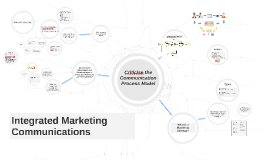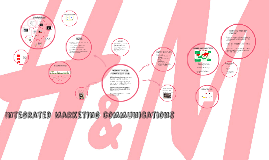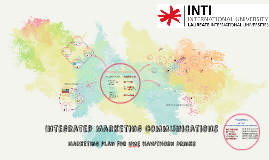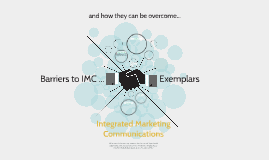Integrated Marketing Communications
Transcript: Biggest competitors in the greater Atlanta area are Presto Property Services, Engineered Restorations Inc., Chandlee and Sons Construction, and Atlanta Classic Stone Services include: leak repairs, water repellants, caulking & sealing, deck waterproofing, coatings & membranes, expansion joint systems, glass & frame restoration, concrete & masonry repairs, and pressure washing & window cleaning Property management companies, building engineers, building owners, consultants, and some general contractors such as Turner Construction, Choate Construction, etc. Structures: buildings, parking decks, exterior stairwells, planters, fountains, plazas, sidewalks, etc. Fields: commercial, industrial, retail, medical, schools, multi-family Office & Commercial Atlanta magazine: $700/quarter * 4 = $2800 per year BOMA Insight (Building Owners & Managers Association of Georgia)- hard copy and online: $800/quarter*4 = $3200 per year BOMA Membership Directory: $1250 per year once a year ABC (Association of Builders and Contractors): $800 per year for the directory ad Blue Book: $335/month * 12 = $4,020 per year Yellow Pages: $35/ month *12 = $420 per year The total cost for a year of print advertising in each of these publications is about $12,490 Sponsorships: 3 golf tournaments a year: CREW (Commercial Real Estate Women CMAA (Construction Management Association) BOMA Total cost is $1,500 for sponsorships, $1,500-$2,500 for food and beverages, and $1,000 for giveaways at the tournament Trade shows and Handouts: Booth is $2,500/ year and back drop changes are $800-$3,000 every 2-3 years Giveaways are $1,000 Marketing collateral (printed presentation folders, brochures, flyers, project overviews) cost $3,000- $5,000 a year Hosting the website cost $400/year Management of the website cost $2,400/year One time cost of proposed changes will cost and estimated $10,000-$15,000 Changes needed include: Search engine placement and frequency Web page organization, cleanliness, linearity More sophisticated photographs/colors Better wording of services to target commercial consumers Testimonials from customers Lists of industry and professional associations Clean up web page: www.everclearenterprises.com Update Facebook page: https://www.facebook.com/pages/Everclear-Enterprises/161342700556065 Start a linked-in page: Professional network is more appropriate for commercial target market Start a Twitter account Tweet before and after pictures of restoration/cleaning jobs Cost of Website and Proposed Changes transfitathens.net transfitblog.wordpress.com Old Budget Breakdown Graphs of Budget Breakdown: Background Information New Budget Breakdown Long term business goal: write a book IMC plan objective: to build brand awareness in the target market for Transfit, as well as Caroline by building presence online through blog, facebook, and website Hopes to gain credibility and awareness as an author/fitness and nutrition expert Transfit After 6 months: facebook: increase "like" count by 50% blog: increase subscriptions by 50% twitter: reach 300 followers pinterest: reach 300 followers Everclear Enterprises Budget Breakdown Social Media Twitter: "Tip of the Day", share blog posts, etc. Instagram: pictures of meals, clients exercising, etc. Pinterest: a "Transfit" account, pin things she likes or approves, pin own blog posts facebook: post more often, generate conversation Social Media Advertising Ads on facebook for blog Have blog posts appear on StumbleUpon Event Marketing Hand out water at local races (AthHalf, 5 and 10Ks) with logo and blog url on label Questions? Past Print Advertising and Costs Integrated Marketing Communications Project Transfit: Background Information Transform your body, mind, and spirit to a more ideal you! "... So glorify God with your body." - 1 Corinthians 6:20 Social Media Maintenance: Facebook: $2,080 Twitter: $2,080 Linkedin: $2,080 Improvements to the Website: $12,500 Traditional Media (Old total): $29,190 New Total: $47,930 New annual total after website improvements: $35,430 Past Advertising and Communication Attempts Comment frequently: respond to comments and comment on other blogs Include guest posts from other bloggers she follows Contests Ask questions, generate conversation Client transformation video Video diaries Show progress from start to finish (~6 months) Other Past Marketing and Communications Before Implementing Recommendations With Website Changes (one time charge) After Website Changes with Recommendations Duration: 6 months facebook Ads: pay per click 6 month budget of $200 $1.11/day StumbleUpon: pay for blog post to appear when users stumble 6 month budget of $200 $0.10 per visit Water bottles at AthHalf and one other race Budget of $100 per race $0.42/bottle 240 bottles Projected Outcomes and Measurements Print Advertising: $12,490 Sponsorships: $1,500 Food and Beverages: $2,000 Giveaways: $1,000 Trade shows: Booth: $2,500 Backdrop: $1,900 Giveaways: $1,000 Marketing Collateral: $4,000

















